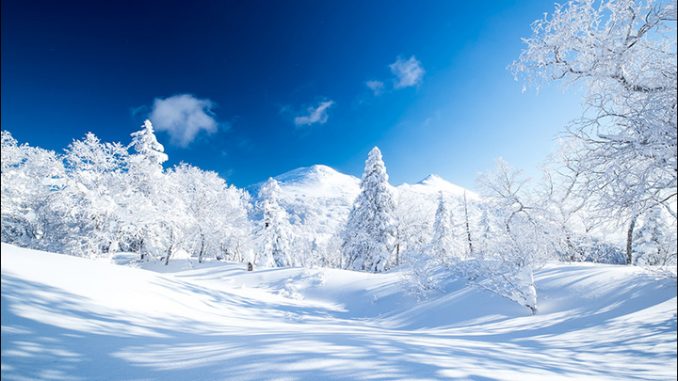
The highest coniferous forest on Russia’s largest island of Sakhalim. Picture: Denis Sergeev
Snow views captured by local photographer and adventurer Denis Sergeev.
These wonderful winter scenes are from the Enchanted Forest in the foothills of Pushkinskaya mountain, altitude 1,047 metres, the highest peak in southern Sakhalin, on Russia’s Pacific coastline.
As Denis said: ‘I didn’t aim to reach the mountains, my target was the so-called Enchanted Forest in the foothills of the mountain.
‘This is the highest coniferous forest in Sakhalin, with trees dressed in sparkling fluffy white coats every winter.
‘I had skis on, but to call this a ski-ing trip is a big exaggeration.
‘The snow is not strong enough to hold you, and underneath there are bushes of cedar birch, so getting there is all about walking on skis, or snow-shoes.
‘The trip there took me about seven hours.
‘I don’t use Photoshop, so colours of white and blue you see on my pictures vary in saturation only depending on the position of sun.



‘I don’t use Photoshop, so colours of white and blue you see on my pictures vary in saturation only depending on the position of sun’. Pictures here and below: Denis Sergeev
‘You can see the puffy clouds on the Sea of Okhotsk down below as you make your way up’, Denis said.
‘You are surrounded by marshmallow-looking trees, especially impressive against a backdrop of dark blue sky.
‘The air is amazing.
‘We are lucky to have snowy and warm winters on the island.
‘When I was in the forest it was only minus 10C.
‘Trees looks like stalactites and stalagmites, bending in all directions under weight of snow.’
‘This is not a mass tourism place, so whoever goes to visit the Enchanted Forest should rely on own strength and resilience.
‘The area is also avalanche-prone.’
Happy New New from Sakhalin!







Ref.: http://siberiantimes.com/other/others/features/enchanting-winter-scenes-from-russias-largest-island-sakhalin/
More from Russia and The Siberian Times ..
The world’s most amazing highways, along frozen Siberian rivers
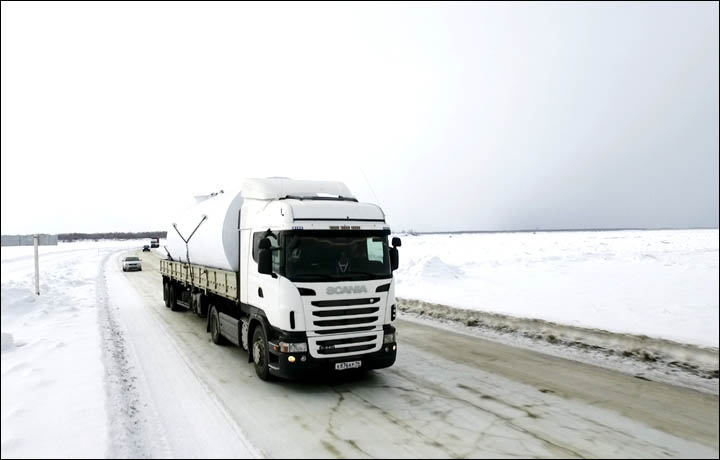
Oil tanker driver Vladimir Kirillin speeding across the ice with a 20 ton load on his journey to supplying outlying areas. Picture: The Siberian Times
Trucks thunder across the ice, overtaking just like this was a normal motorway – but it’s not.
Would you risk it?
Driving for long distances over frozen rivers, the ice between 80 centimetres and two metres thick?
These roads are crucial to supplying remote villages and towns in some of the remotest Siberian regions.
Our amazing video shows oil tanker driver Vladimir Kirillin speeding across the ice with a 20 ton load on his journey to supplying outlying areas.

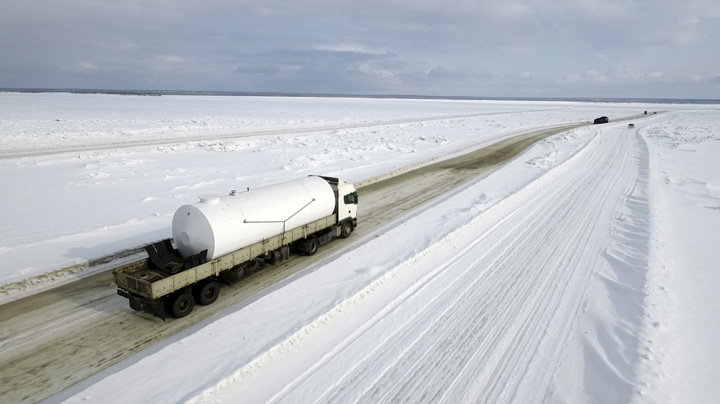
These roads are crucial to supplying remote villages and towns in some of the remotest Siberian regions. Pictures: The Siberian Times
His route, along a stretch of the Lena, the 11th longest river in the world, is, as he tells us, potentially treacherous.
Join him in his cabin with barely 1.5 metres of frozen ice between him and disaster.
At places on his journey the river is some 30 metres deep.
At one point on this stretch from Yakutsk to Nizhny Bestyakh another truck overtakes him as if this was any other highway, showing the huge strength of the ice.
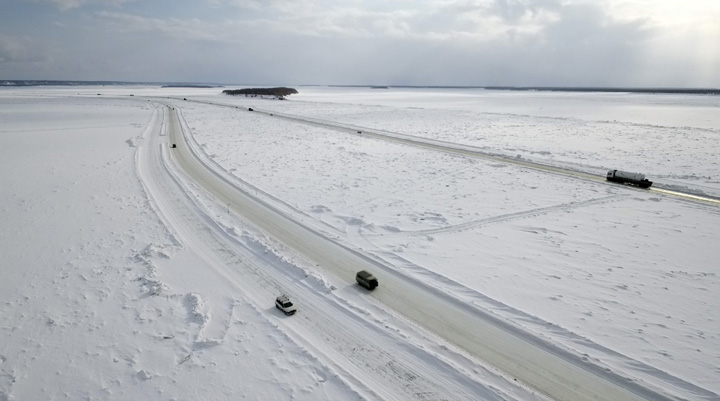
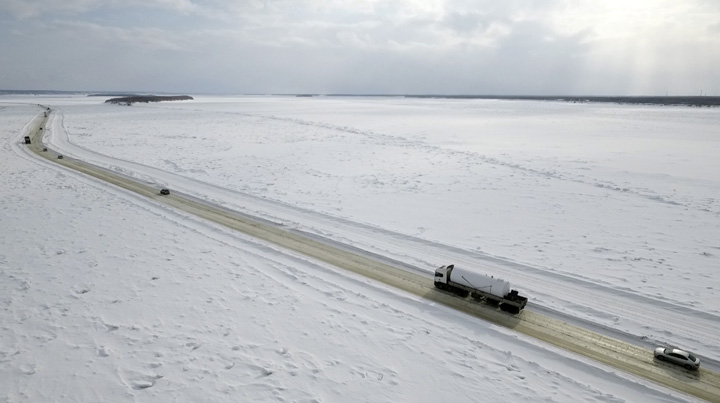

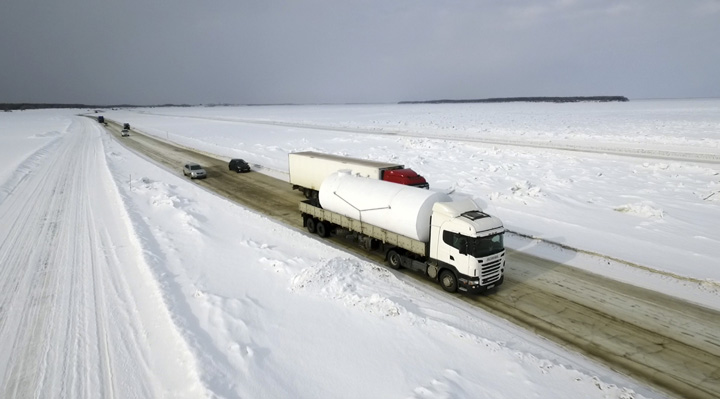
At one point on this stretch from Yakutsk to Nizhny Bestyakh another truck overtakes him as if this was any other highway, showing the huge strength of the ice. Pictures: The Siberian Times
These motorways are the lifeblood of Siberia in the deep winter, and the drivers are undoubtedly Russia’s unsung heroes.
Many such roads open this week, and will remain safe – mostly anyway – until April, when the ice thaws.
But here on the Lena, only vehicles of up to twenty tons are permitted for now, until the ice is thicker later in the winter.
Other roads have a more limited annual lifespan, depending on local conditions.
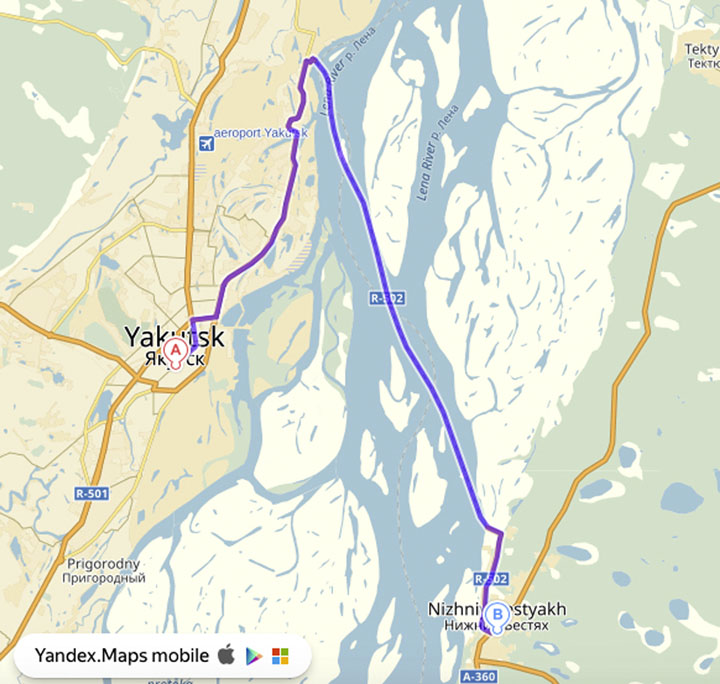
Map showes the way from Yakutsk to Nizhny Bestyakh. Picture: The Siberian Times
For example, one famous zimnik, or winter road, stretches a distance of 120 kilometres over the East Siberian Sea supplying the 400 residents of Ayon island in Chukotka.
This is open only two months a year. But as our pictures show, accidents happen. And they’re often fatal.
Each winter trucks and cars fall through the ice.
The truth is dozens of Russians lose their lives each year after driving on thin ice.
In many cases they have veered off approved and monitored ice roads.
In 2015, for example, the 33 year old younger son of deposed Ukrainian president Viktor Yanukovych drowned after getting trapped under the ice of Lake Baikal after his minivan sank.
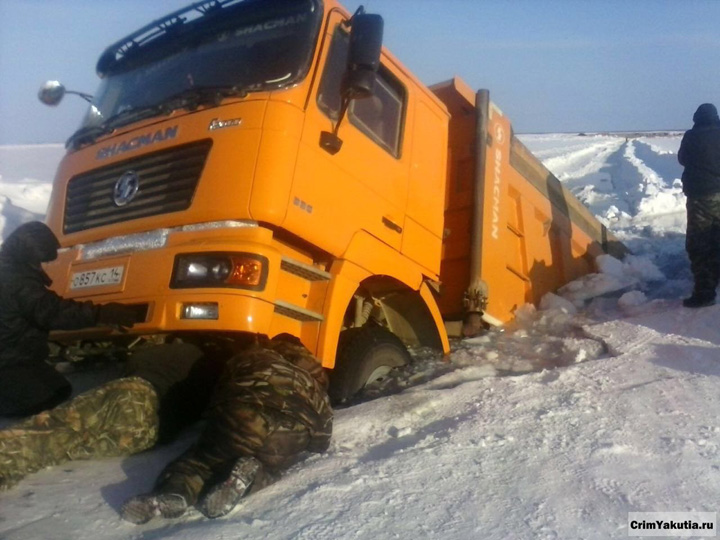
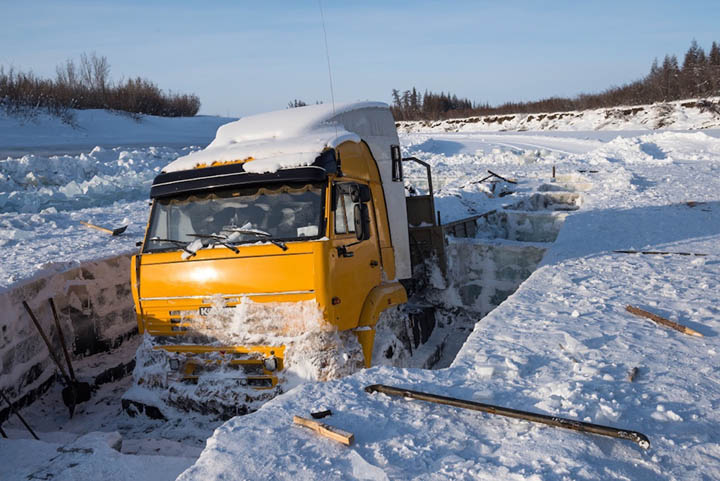
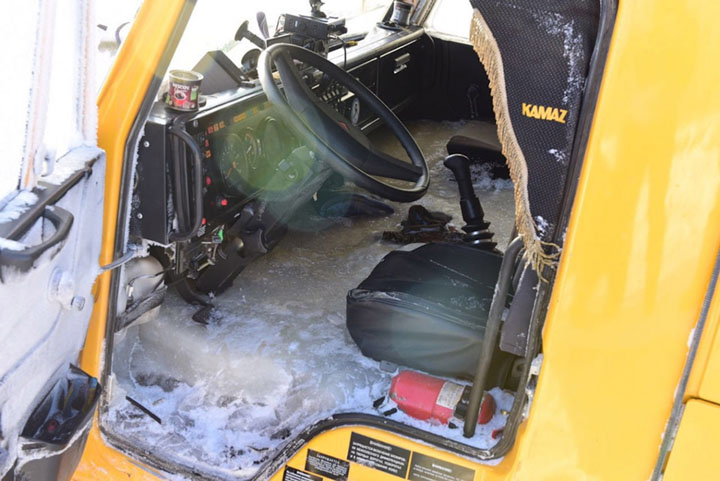
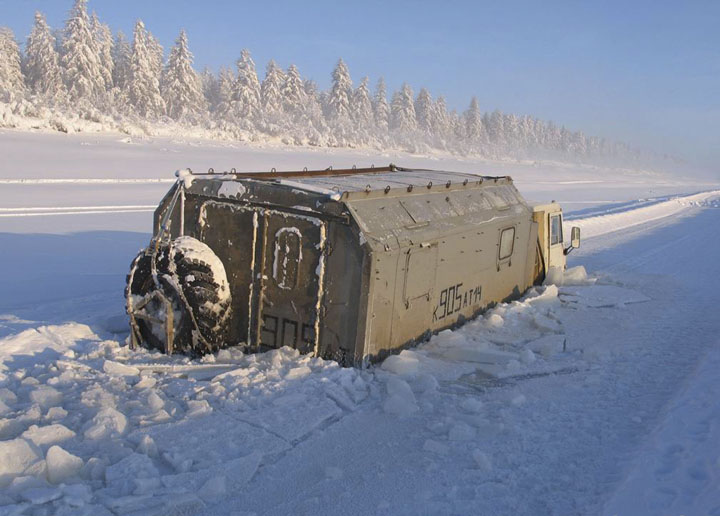
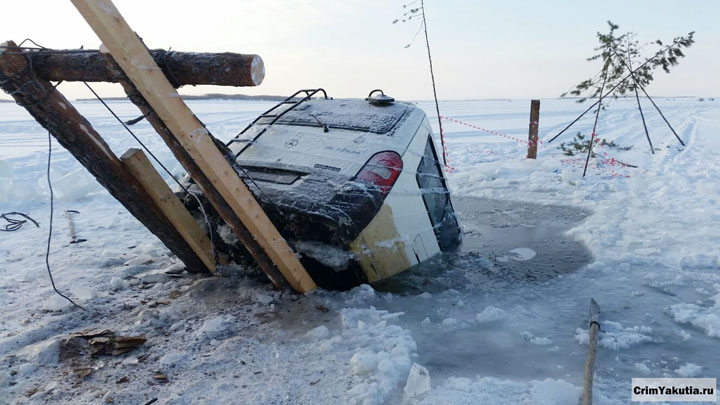
Each winter trucks and cars fall through the ice. Pictures: CrimYakutia, Bogdan Bulychiov, cp-ck.narod.ru
Friends watched in horror as Viktor junior frantically head butted the ice seeking to escape after he had driven on a winter road.
Through the clear waters of Baikal, vehicles lost in this submerged graveyard are visible.
Without these zimniks, tens of thousands of Russians would be left without food and essentials for months on end.
Many drivers have stories to tell of the dangers.
‘A few times I heard the damned ice cracking under my truck as I was driving over it. That was so scary,’ said one, Artyom.
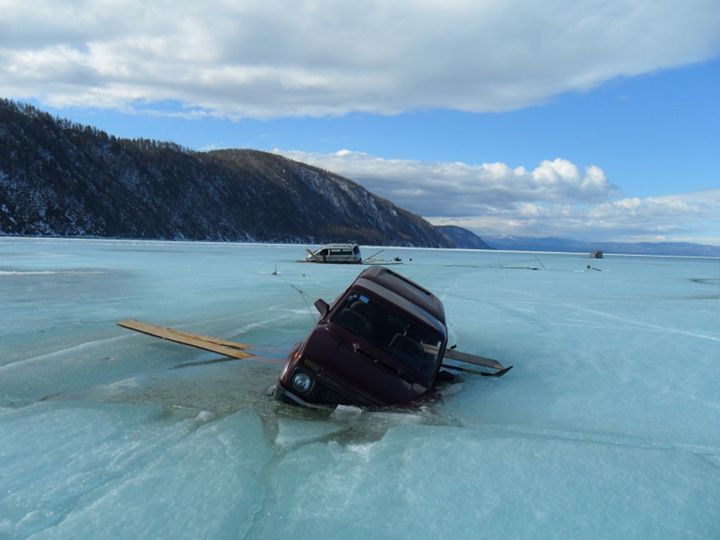
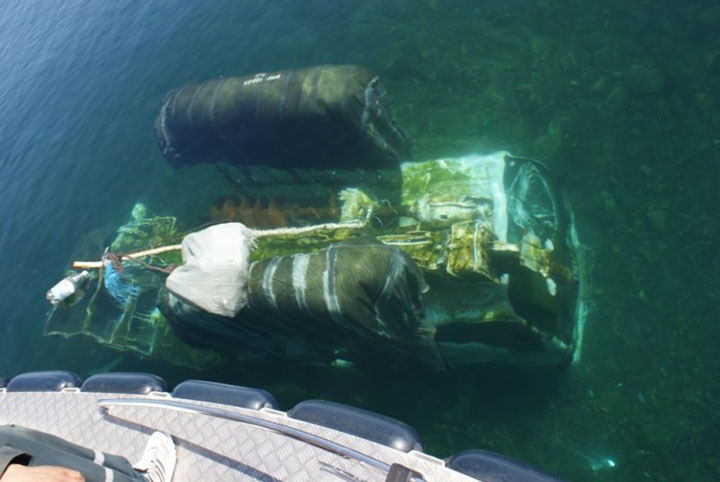
Cars often fall through the ice of Baikal. Pictures: EMERCOM
In another case, a truck broke down on an ice road and the driver went out to try and fix it.
Then the cabin collapsed through an ice hole, trapping his arm.
Soon he noticed a pack of wolves circling.
The tough Siberian man amputated his limb in order to escape the hungry predators.


